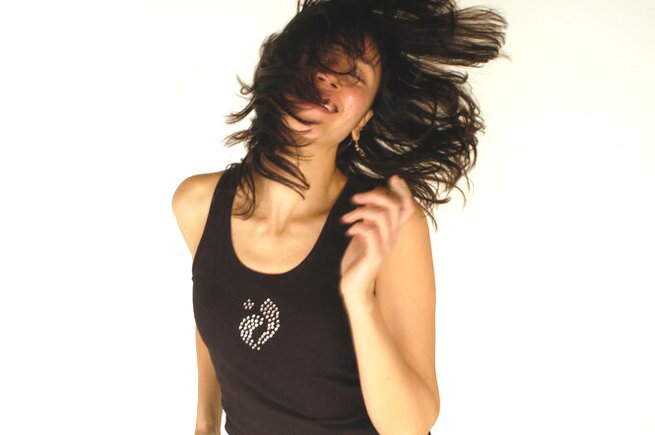Shaking it out in my dancing days. Photo by Des Crawley
Shaking is the new way to meditate and everybody can do from young to old. And what’s more, it’s super easy! And if you’re looking for a meditative practice for the start of the day, shaking will get you feeling loose, refreshed and present. It can be both meditation and workout. No brainer right?! Learn about Shaking and try out my guided Shaking meditation here…
What Shaking Meditation is
Shaking is a proven, effective way to naturally release stress from your body in 10 minutes. No need for logic, medication or breathwork. Just shaking. Formal shaking techniques go longer and have more steps, so this recording will introduce you to the concept and get you started. Try to lose yourself in the movement, rather than watching the screen. Find a way to shake that feels right for you. Everyone’s different so you don’t even need to watch the imagery, you can just listen to the cues and do your thing 🙂
Find yourself somewhere private for this meditation so you can really go for it. If meditation, breathwork or mindfulness practices-aren’t working for you, try shaking. Maybe the best thing for your monkey-mind is a technique based on embodiment.
Many of you won’t know this, but for many years I taught conscious movement techniques from Nia technique, Movement Meditation to ChiBall Method. That’s me in the main pic shaking it out. I taught 3 nights a week and over 30 workshops in the first couple years of practice. I loved every minute. Being in our bodies is a privilege and it’s essential to good health so let’s enjoy moving!
Move for pleasure, move for health, shake it out and go have yourself an amazing day :).

Photo by Anna Shvets
Why you should ‘shake it out’
This meditation below derives from the technique of shaking (formally call TRE – trauma release exercises) which suits our more sedentary lifestyles in the 21st century perfectly. Our bodies need and want to move every day, at any level of fitness and range of movement. Movement gets our chi flowing, unblocks stagnation in the body, stimulates the lymphatic system and most importantly, moves you into a parasympathetic state. Shaking is actually a natural animal response to trauma and stress. You can see it in wild animals after a stressful experience. We’ve just become so civilised that we’ve forgotten all these inherent responses that help us deal with trauma and stress. Time to get back in touch with your inner animal.
TRE was created by psychotherapist and psychologist Dr David Berceli, and it’s based on accessing that innate stress-recovery response in animals and triggering ‘neurogenic tremors’. It’s a cathartic experience when performed in the full sequence of seven exercises. Athletes use shaking to improve muscle recovery after endurance. You can also use shaking to help your brain recover from trauma. After years of teaching movement practices for health I can guarantee, it’s the easiest way to lose the monkey mind and feel healthy and harmonized! Time to shake off that tension!
Note that my video is not the complete shaking process, it’s a simplified version. Simple is good!
The benefits of Shaking are:
- Reduces anxiety and stress
- Reduces sensitivity to anxiety
- Improves sleep quality
- Alleviates PTSD symptoms
- It’s one of the very few meditation techniques that can dampen the ‘fight or flight’ HPA axis response to trauma
- Activates the parasympathetic nervous system (induces calm)
- Reduces depression
- Perfect meditation for kids and all ages
- Releases excess adrenal hormones
- Stimulates lymphatic flow (to assist with detox, skin health and immune health)
- It’s quicker than most meditative practices and it doesn’t require you to sit still for hours or to fit any particular image of a ‘meditator’.
How Shaking works:
In the first stage we arrive in our bodies, here and now, exploring and sensing how we feel and where the tension may be in our bodies. So at first, this will feel familiar to many other meditative techniques. This tension is what you’ll be releasing when you shake. It’s all about letting go and breaking up stagnation in the body. You can do this meditation sitting or lying as well, you don’t have to be standing. However, if you can do it standing, you’ll find it easier to get a greater range of movement.
Holding on to unresolved or unhealthy emotions and stresses can lead to dis-ease and may manifest in a physical health condition. So before it gets to that level, use shaking as a regular practice to let go and release. You’ll be releasing tensions that can lead to hormonal imbalances like high cholesterol, high cortisol, adrenal fatigue and thyroid disturbance. You can also move at a speed that gives you a workout, keeping muscles and bones stimulated and toned. The second stage of shaking is working through the body from feet to shoulders to release energy. In the final stage of this meditation, we focus on bringing a sense of harmony and joy to the head. This is best done lying and letting your weight fall upon the earth.
Shaking activates the parasympathetic nervous system. We want to shift you from a sympathetic state into a parasympathetic state. Why? In the sympathetic state (the ‘fight or flight’ state), vigilance is high and all of your stress hormones are excited. This means that important health processes in the body like digestion of foods and resolution of inflammation and healing become inhibited. You can use shaking to shift into a parasympathetic state to let your brain know there’s no stressors to deal with anymore, and your body can focus on healing and feeling well.
Where to shake
You need space and privacy so that you can feel uninhibited and free as well as avoid hitting furniture or things like door handles. Find somewhere private, preferably indoors, and tone the lighting down just enough to create ambience.
When to shake
Mornings are really great for shaking meditations for most people. It’s a personal thing. When do you feel like meditating? Do it then. Trust your intuition. I like mornings because I find it easier to move into the parasympathetic state when my day hasn’t become too full and my mind’s more empty. I’d recommend it at night for anyone who becomes adrenalized in the latter parts of the day. If you get that ‘second wind’ setting in around 9:30pm, you know the one where you feel like launching into a new project or your nervous energy is building towards bedtime, it’s probably a good idea to try Shaking in the evening. Perhaps an hour after dinner. Use it to release excess adrenalin.
Music for shaking
Actually you don’t need music at all, and sometimes the beat can put you off your natural rhythm. I’ve tried to use music with a gentle beat here, but if you don’t like my recording here, look for spacious music without a set beat.
Any cautions?
There are cautions with ANY movement activity. Shaking is no different. If you have a health condition that may be aggravated by abrupt, shaking motions, then check with your health professional before trying this technique. If you go ahead with Shaking, know that you can go as soft or strong as you like with the range and intensity of movement. Stay safe and tune into what feels good to you.
Intrigued to learn more? Find out about the creator of TRE and the physiological rationale behind the technique here: https://traumaprevention.com/about-dr-david-berceli/
Okay, it’s time to move….
X Sulin
Shaking Meditation for Stress Release
10 minute Shaking Guided Meditation for Stress Release

Hey there! Welcome to my world of totally natural and powerful healing medicines. Medicines from nature. Medicine from Source. I’m a naturopath and herbalist with extensive clinical experience working with a range of health conditions including hormonal, metabolic, mental health, sleep and more.
I’ve brought together years of clinical and teaching experience, academic skill and curiosity to bring you this blog. I hope you enjoy it! If you do, leave a comment, I’d love to hear from you!

References
- Berceli, D. (2010). Neurogenic tremors: A body-oriented treatment for trauma in large populations. Trauma und Gewalt, 4, 148-56.
- Lynning, M., Svane, C., Westergaard, K., Bergien, S. O., Gunnersen, S. R., & Skovgaard, L. (2021). Tension and trauma releasing exercises for people with multiple sclerosis–An exploratory pilot study. Journal of Traditional and Complementary Medicine.
- Berceli, D., Salmon, M., Bonifas, R., & Ndefo, N. (2014). Effects of self-induced unclassified therapeutic tremors on quality of life among non-professional caregivers: A pilot study. Global advances in health and medicine, 3(5), 45-48.
- Wald, J., & Taylor, S. (2007). Efficacy of interoceptive exposure therapy combined with trauma-related exposure therapy for posttraumatic stress disorder: A pilot study. Journal of Anxiety Disorders, 21(8), 1050-1060.
- Herold, A. (2015). Neurogenic tremor through TRE Tension, Stress and Trauma Releasing Exercises according to D. Berceli in the treatment of post-traumatic stress disorder PTSD. Psychological Counseling and Psychotherapy, 2(1-2), 76-84.





